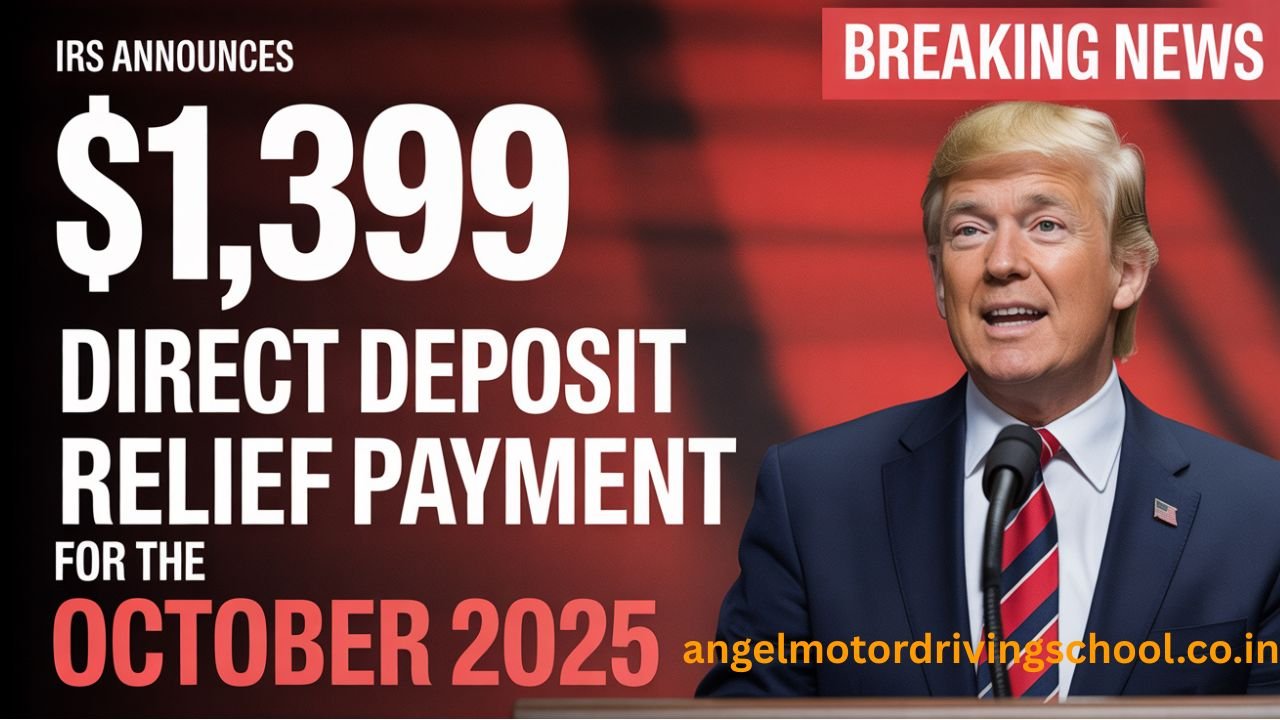The IRS announces $1,390 direct deposit relief payment for October 2025, giving millions of Americans much-needed financial help during times of rising costs. With inflation making everyday essentials more expensive, this new relief deposit aims to ease pressure on households, retirees, and working families. Unlike earlier stimulus rounds, this direct deposit initiative has been designed to deliver funds quickly, directly into bank accounts, ensuring fast access without the hassle of checks or delays.
Many are calling it a timely move, especially as bills, rent, and healthcare costs continue to climb. By confirming this $1,390 deposit, the IRS provides not just financial aid but also a sense of security to citizens preparing for the year-end expenses. Let’s explore eligibility, payment schedules, and key details you need to know if you are expecting this relief deposit.
Social Security Fairness Act Payments 2025 – Check Amount, Eligibility & Payout Dates
Eligibility For The $1,390 Direct Deposit Relief Payment
To qualify, individuals must meet income and filing requirements set by the IRS. Generally, single filers earning up to $75,000 and married couples earning up to $150,000 are eligible for the full $1,390. Head-of-household filers have a slightly higher threshold. Dependents may also impact the total payment amount for families. Taxpayers who have filed their 2024 tax returns with direct deposit details are first in line.
For those without bank details on file, checks or prepaid debit cards may be issued, though processing may take longer. Importantly, seniors receiving Social Security benefits, as well as veterans and SSI recipients, are automatically eligible, with payments deposited into their existing accounts. This ensures broad coverage for vulnerable groups who rely on federal benefits. The IRS stresses the need to have accurate bank information updated on the IRS portal to avoid delays.
Payment Schedule For October 2025
The payment schedule for this relief is designed for efficiency. According to IRS updates, the $1,390 direct deposit relief payment will start rolling out from the first week of October 2025. Payments will continue in batches throughout the month to cover millions of eligible taxpayers.
Those with direct deposit linked to their IRS records will see the fastest transfers, often within the first week. For mailed paper checks, processing may take an additional 2–3 weeks depending on postal services. Prepaid debit cards are another option for households without bank accounts, ensuring financial inclusion.
The IRS plans to publish a “Get My Payment” tracker by the end of September 2025, helping recipients monitor their payment status. This tool, which worked successfully during previous stimulus rounds, allows taxpayers to confirm deposit dates and updates in real time, reducing confusion.
| Category | Payment Method | Expected Date |
|---|---|---|
| Direct Deposit | Bank Accounts on File | Oct 3–10, 2025 |
| Paper Checks | By Mail | Oct 15–25, 2025 |
| Prepaid Debit Cards | IRS Issued Cards | Oct 20–30, 2025 |
How To Claim The $1,390 Relief Payment
Most taxpayers don’t need to take extra steps to claim this relief, as eligibility is tied to 2024 tax filings. If your bank details are updated, you will automatically receive the payment. However, those who missed filing their taxes or had issues with their 2024 returns should file immediately to avoid being excluded.
The IRS has also emphasized using its official portal to update direct deposit information, which guarantees faster payment processing. For families with dependents, the IRS will calculate relief based on reported household information, so accuracy is key.
Non-filers, including Social Security recipients, veterans, and SSI beneficiaries, are automatically included without extra paperwork. For extra assurance, taxpayers are encouraged to use the “Get My Payment” tool for real-time updates once the rollout begins in October 2025.
Why This Relief Payment Matters
This relief comes at a crucial time for American households, as inflation continues to affect grocery bills, rent, and medical costs. The IRS $1,390 direct deposit relief payment provides immediate cash flow, reducing financial stress for millions.
Seniors living on fixed incomes, families with children, and workers managing higher living costs are the main beneficiaries. By offering direct deposits, the IRS ensures speed and efficiency compared to past relief programs. Furthermore, this payment is tax-free and does not need to be repaid, making it a true lifeline for struggling households.
Economists believe the additional spending power will also help support local businesses as consumers use the funds for everyday needs. More than just financial support, this initiative represents a government commitment to stabilizing household budgets during uncertain economic conditions.
Secondary Benefits And Future Relief Possibilities
Beyond the direct cash benefit, the $1,390 relief payment may open doors to additional programs. States may use federal support to provide supplemental aid for housing, food, or utility assistance.
Low-income families might also qualify for expanded tax credits or local rebates tied to this IRS relief. For many, this raises questions about whether more payments will follow in 2026 if economic challenges persist. Policymakers have hinted that future relief could be targeted more toward families, seniors, or regions hit hardest by inflation.
While no official statement has confirmed further payments, this October 2025 relief is being described as a “bridge” to help households while Congress considers broader economic measures. Staying updated with IRS announcements and financial aid news will be key for anyone hoping to benefit from upcoming programs.
Conclusion
The IRS announces $1,390 direct deposit relief payment for October 2025, marking a significant financial boost for millions of Americans. With a clear payment schedule, automatic deposits, and simple eligibility requirements, the relief aims to reach citizens quickly and effectively.
As households brace for rising costs, this payment is both timely and impactful, especially for seniors, families, and low-income workers. The $1,390 deposit not only provides immediate aid but also signals the government’s ongoing commitment to economic stability.
